 W
WThe 7stanes are seven mountain biking centres spanning the south of Scotland, from the heart of the Scottish Borders to Dumfries and Galloway. They are all in Forestry and Land Scotland forests and are known as the 7stanes because each venue features a 'stane', created by artist Gordon Young, somewhere along the forest trails.
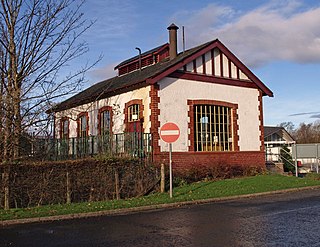 W
WThe Balloch Steam Slipway consists of a ramp, carriage and steam powered winch located on the shores of Loch Lomond by which ships or boats can be moved in and out of the loch, usually for repairs and general maintenance. It is owned and operated by the Loch Lomond Steamship Company. It is thought to be Europe's last steam operated winch and it is contained within a railway-style winch house that is category A listed.
 W
WBarshaw Park is public park in Paisley, Scotland. It has 55 acres of recreational parkland and garden areas which are open to the public.
 W
WThe Bicycle Tree is a veteran tree near Brig o' Turk in the Trossachs, Scotland. Dating from the late 19th century, the tree grew in or near to the scrap heap of the village blacksmith and has encapsulated several metal objects over the years. Most notably this includes an early 20th-century bicycle and, reputedly, a ship's anchor and chain. The Bicycle Tree is recognized as a landmark of the local area and has become a tourist attraction. It was granted the protection of a Tree Preservation Order by the Loch Lomond and The Trossachs National Park Authority in March 2016.
 W
WBirkhill Castle is a stately home, the residence of the Earl of Dundee, located on the banks of the River Tay, a short drive from St. Andrews.
 W
WThe Clyde puffer is a type of small coal-fired and single-masted cargo ship, built mainly on the Forth and Clyde canal, and which provided a vital supply link around the west coast and Hebrides of Scotland.
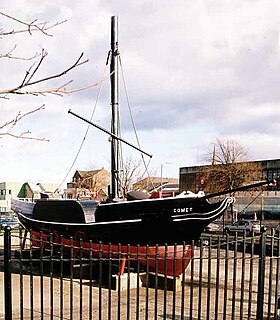 W
WThe PS Comet was built in 1812 for Henry Bell, hotel and baths owner in Helensburgh, and began a passenger service on 15 August 1812 on the River Clyde between Glasgow and Greenock, the first commercially successful steamboat service in Europe.
 W
WDevon Way is a pathway in Clackmannanshire, Central Scotland. It lies on the southern section of the former Devon Valley Railway from Dollar to Tillicoultry a distance of 3+1⁄4 miles (5.2 km). It is used by for walkers, cyclists and horse riders and forms part of Route 767 on the National Cycle Network.
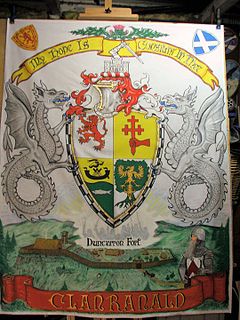 W
WDuncarron is a modern reproduction of a fortified village from the early Middle Ages of Scotland. It is the reconstruction of a typical residence of a Scottish clan chief from the early part of the last millennium. The supporter is the nonprofit organization The Clanranald Trust for Scotland, whose chairman is Charlie Allan. Duncarron is located in the Carron Valley on the eastern end of the Carron Valley Reservoir, near Stirling. The medieval village is being built with the help of volunteers from all walks of life, and is intended to preserve and disseminate Scottish culture and heritage through education, active participation and entertainment.
 W
WFountain Gardens is in Paisley, Scotland. It has recreational parkland and garden areas which are open to the public. The park is Paisley's oldest public gardens. Within the park is Grand Central Fountain, one of only three Category A listed fountains in Scotland.
 W
WGo Ape! is an outdoor adventure company which runs tree top ropes courses under the names Tree Top Challenge, Tree Top Adventure and Zip Trekking, as well as ground-based Forest Segway Safaris, at locations across the United Kingdom and the United States.
 W
WAs of June 2019, this is the list of the 282 Munros, recognised by the Scottish Mountaineering Club ("SMC") and The Munro Society. The Munros are listed by "Section" per the Munro's Tables, and in descending order of height within each section. Hills are divided by sub-region, and hills with less than 200 m (656 ft) relative height are indented. The term Real Munro is used for hills with a prominence above 150 m (492 ft), which is the threshold for a Marilyn. For a single table of all 282 Munros, or all 227 Munro Tops, ranked by height and by prominence, see the "List of Munro mountains in Scotland".
 W
WPS Maid of the Loch is the last paddle steamer built in the United Kingdom. She operated on Loch Lomond for 29 years and as of 2021 is being restored at Balloch pier.
 W
WScotland is the most mountainous country in the United Kingdom. Scotland's mountain ranges can be divided, in a roughly north to south direction, into: the Scottish Highlands, the Central Belt and the Southern Uplands, the latter two primarily belonging to the Scottish Lowlands. The highlands contains the country's main mountain ranges, but many hills and mountains are to be found south of these as well. The highlands includes Britain's loftiest peaks, the Munros, the highest being Ben Nevis at 1,344.53 m. The below lists are not exhaustive; there are countless subranges throughout the country.
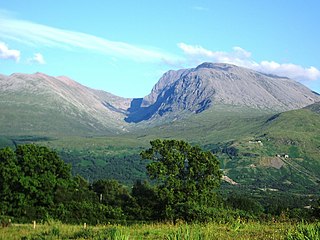 W
WA Munro is defined as a mountain in Scotland with a height over 3,000 feet (914.4 m), and which is on the Scottish Mountaineering Club (SMC) official list of Munros; there is no explicit topographical prominence requirement. The best known Munro is Ben Nevis, the highest mountain in the British Isles at 4,413 feet (1,345 m).
 W
WThe National Trust for Scotland for Places of Historic Interest or Natural Beauty, commonly known as the National Trust for Scotland, is a Scottish conservation organisation. It is the largest membership organisation in Scotland and describes itself as "the conservation charity that protects and promotes Scotland's natural and cultural heritage for present and future generations to enjoy".
 W
WRobertson Park is in Renfrew, Scotland. It has recreational parkland and garden areas which are open to the public.
 W
WThe Scottish Dark Sky Observatory was an astronomical observatory located near Loch Doon Loch Doon, East Ayrshire, Scotland. It was situated on a hilltop site overlooking the Craigengillan Estate and Dalmellington. The site is located in the northern edge of the Galloway Forest Dark Sky Park, and within the Galloway and Southern Ayrshire UNESCO Biosphere, with low levels of light pollution and clear horizon views.
 W
WStirling Castle, located in Stirling, is one of the largest and most important castles in Scotland, both historically and architecturally. The castle sits atop Castle Hill, an intrusive crag, which forms part of the Stirling Sill geological formation. It is surrounded on three sides by steep cliffs, giving it a strong defensive position. Its strategic location, guarding what was, until the 1890s, the farthest downstream crossing of the River Forth, has made it an important fortification in the region from the earliest times.
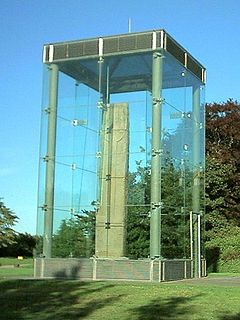 W
WSueno's Stone is a Picto-Scottish Class III standing stone on the north-easterly edge of Forres in Moray and is the largest surviving Pictish style cross-slab stone of its type in Scotland, standing 6.5 metres in height. It is situated on a raised bank on a now isolated section of the former road to Findhorn. The stone is named after Sweyn Forkbeard, but this association has been challenged and it has also been associated with the killing of King Dubh mac Ailpin in Forres in 966. The stone was erected c. 850–950 but by whom and for what, is unknown.
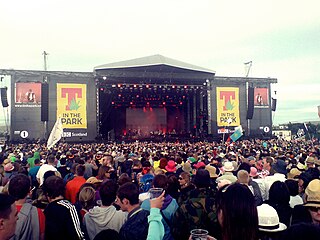 W
WT in the Park festival was a major Scottish music festival that was held annually from 1994 to 2016. It was named after its main sponsor, Tennents. The event was held at Strathclyde Park, Lanarkshire, until 1996. It then moved to the disused Balado airfield, Perth and Kinross, from 1997 to 2014. In 2015 the festival moved to Strathallan Castle. It was originally held over two days, and extended to three days from 2007. In 2016 the daily capacity was 70,000.
 W
WThe Belladrum Tartan Heart Festival is a music and arts festival, held on the Belladrum Estate in Kiltarlity near Inverness, in Scotland. It is normally held at the start of August. Founded in 2004, the festival has rapidly grown in popularity. The festival has sold out in advance every year since 2008. The capacity of the 2019 festival was 20,000.
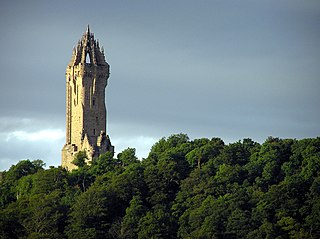 W
WThe National Wallace Monument is a tower standing on the shoulder of the Abbey Craig, a hilltop overlooking Stirling in Scotland. It commemorates Sir William Wallace, a 13th- and 14th-century Scottish hero.
 W
WPS Waverley is the last seagoing passenger-carrying paddle steamer in the world. Built in 1946, she sailed from Craigendoran on the Firth of Clyde to Arrochar on Loch Long until 1973. Bought by the Paddle Steamer Preservation Society (PSPS), she has been restored to her 1947 appearance and now operates passenger excursions around the British coast.